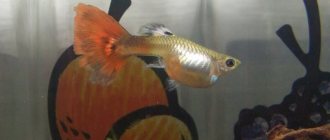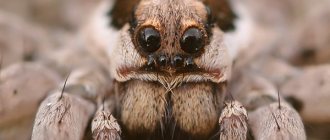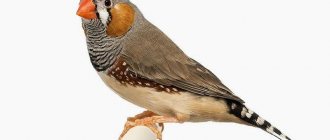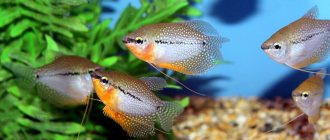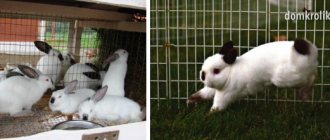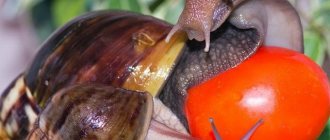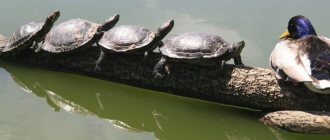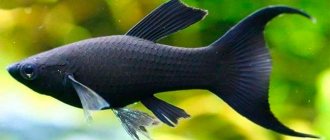Setting up an aquarium for guppy
Three-liter jars, glasses (according to the Internet) and tiny nano-aquariums should all be considered only a temporary home for guppies. They don’t live in these, but survive, and these, you see, are two big differences. The ideal water level for guppies in an aquarium: 35-40 cm. In the spawning tank, where newly born fry must rise to the surface for air to fill their swim bladder, the desired water level is no more than 20 cm.
Of course, for many aquarists, guppies live in large aquariums with other fish and reproduce without problems. And guppy fry in a community aquarium survive in “crowds”. However, among specialists this is called “self-seeding”. If you are not going to monitor the purity of the breed and breed guppies for breeding purposes, then the size of the aquarium, by and large, is only of relative importance. Please note that self-seeding inevitably leads to the degeneration of the breed - after a few generations, the percentage of defective, infertile and simply plain-looking fish will become too large.
The Indian fern is considered a unique indicator of water quality for guppies. If it is well rooted and growing quickly, everything is normal. As soon as the roots of the plant begin to rot, it floats to the surface and even dies - which means hard times have come for the guppies. The cause of the changed conditions should be found out and eliminated as quickly as possible!
plants for an aquarium with guppies - for purely decorative reasons. Small fish will look more impressive against the backdrop of such flora. But you should not be overzealous with the number of plants. Otherwise, the pH differences between day and night will become too significant, especially if the aquarium is not aerated at all.
By the way, about aeration: in nature, all types of guppies live in slow-flowing and not at all crystal clear reservoirs. Artificially oxygenating water for them is perhaps not entirely correct. Because the closer the conditions of their existence are to natural ones, the better. Only sometimes, if there is overcrowding in the aquarium and it is generally too small for all the fish, do you have to organize both aeration and filtration. When the fish begin to swim near the surface, frantically swallowing air, this is a sure sign that they are suffocating, and it’s time to buy an aerator! In a small (15 to 20 liters) aquarium, where there is no purging, you can keep veiled guppies at the rate of about one and a half liters per male and from two to three liters per female. If the aquarium is aerated, the planting density increases two to three times.
If you have round-tailed breeds, then the stocking density increases by another order of magnitude without the threat of overpopulation. A one hundred liter aquarium with a constantly running aerator and filter (plus regular replacement of some of the water with fresh water) is an excellent home for three hundred males. And in the case when there is no soil in it, and detritus is constantly removed using a siphon, up to four hundred male guppies can be planted in it.
For females intended for breeding, the stocking density is two to three times less. If these norms are violated, the fertile function of fish drops to almost zero, since the maturation and functioning of the sex glands is inhibited.
What to feed guuppies
In artificial reservoirs, the diet of colorful inhabitants should be varied and nutritious. In nature, viviparous individuals eat the smallest aquatic representatives - crustaceans, ciliates, mosquito larvae, fry of other fish species, and sometimes feast on algae. Therefore, the main attention in proper nutrition of guppies should be given to living organisms with a high protein content:
At home, you can pamper your guppies with finely chopped earthworms, chopped small fish and squid fillets. During winter, such delicacies are stored in advance by pre-portion freezing. Unpretentious inhabitants of the aquarium also need plant food for proper intestinal function, ready-made vitamin supplements to strengthen the immune system and dry feeding.
Fry
Baby guppies are not much different from their parents, except in size. But this circumstance is also a temporary phenomenon. The fry grow very quickly and already on the second day after birth they are able to eat from the “adult table”. Only the size of the food should not exceed the size of the mouth of the fish itself. The best option is a dry mixture of microplankton for breeding, which is prepared in advance, or “live dust” - ciliates and microscopic worms.
In the first week, fast-growing babies are well served with nutritious protein foods that provide a lot of energy - brine shrimp. After 7–8 days, the stronger fry are fed with crushed cyclops, tubifex and bloodworms.
For proper balanced nutrition of the fry, special dry food must be introduced. This will allow:
- diversify your diet;
- increase your pet’s immunity with additional vitamins and minerals;
- receive adequate nutrition appropriate for age;
- make life easier for the owner by reducing the time for preparing food.
If the food particles are not too small in your opinion, it is recommended to knead them. Prepared food is not able to satisfy all the requirements of a growing body, and its frequent consumption can lead to infertility and loss of bright color. Dry food should be used no more than once a week and only a month after birth.
As an alternative to live and dry food for guppies, the cubs are given homemade substitutes that they prepare themselves: egg yolk, curdled milk, cheese.
- A chicken egg is boiled hard. The yolk is kneaded in a spoon and wrapped in clean gauze. The resulting bag is dipped into water.
- The finished yogurt is poured with boiling water. The resulting dense clot is cleared of whey and used in the same way.
- Hard cheese without additives is grated on a fine grater and dried.
After such complementary feeding, the water in the aquarium quickly deteriorates and requires frequent changes.
Lighting, temperature and other tricks
The duration of lighting in an aquarium with guppy should be no more than 12 hours a day. This is very important for the health of the fish. Experiments have shown that the results of continuous lighting can be extremely disastrous. Firstly, the ability to reproduce is reduced. Secondly, the guppy’s color fades. For example, individuals colored in all shades of red become pale pink after only 24 hours of constant light. If you give them a break from exposure to bright lamps, the color will gradually recover. But the fertile function, unfortunately, is not.
It will be just wonderful if the sun's rays sometimes fall on the aquarium. The sun is a natural stimulator of all life processes in any living organism, and fish in this case are no exception. In winter, the duration of lighting is reduced by two to three hours, which also brings the conditions in the aquarium closer to natural ones.
For a 20-liter tank, the light of one 15 W light bulb (fluorescent or regular incandescent lamp) is sufficient. For a 40-liter - 15 W in summer and 25 W in winter. To illuminate a 100-liter aquarium, you need a 40 W lamp.
The location of the lamp is above the aquarium and preferably above its center.
Aquarium plants will be an excellent indicator of the correct lighting level. If they grow well, their stems and leaves are a healthy green (or wine-red) color, then there is no cause for concern. Yellowing, degrading, pale bushes signal a lack of light. Leaves covered with a coating of algae, plus water blooms indicate excessive lighting.
How many times a day should you feed your guppies?
The health and development of fry, and then adults, directly depends not only on the quality of nutrition, but also on its regime. To begin with, the newly born babies are fed 5-6 times a day in small portions: they are given as much as they eat within a minute.
The uneaten amount of food should not be allowed to settle to the bottom, otherwise, if the residues decompose in the aquatic environment, an increased nitrogen content and toxic ammonia will form, which leads to the premature death of the offspring. It will be very useful to change the water daily with liquid from the parents’ aquarium and have constant lighting.
After a week, they switch to four meals a day. After 1.5–2 months, a constant regimen is established, as in adults, 2–3 meals a day every 4 hours.
Important! It is forbidden to feed guppies often. It is useful to practice fasting days, when one day a week food is not served at all.
Water temperature for guppy
There is still no consensus among guppy fans about the temperature in a guppy aquarium. One part of aquarists believes that the higher it is (up to 27ºС), the better. Others claim that low temperatures have a more beneficial effect on their pets' bodies. Everyone has quite compelling arguments that make them believe in the correctness of both one and the other opinion.
However, the following recommendations are common and work well: guppies do not feel discomfort at temperatures from 18 to 30ºC. Is that reproduction is more active when the thermometer shows a figure slightly higher than 24ºС. At temperatures below 17ºС, diseases, including infectious ones, begin to appear. In general, the lower temperature limit for guppy: 4ºС. Daily fluctuations of 3-5ºС will not harm them.
Changing water in a guppy aquarium
Regarding water changes when keeping guppies in an aquarium, we need to speak out specifically. It is usually recommended to do them weekly. This is possible, but if you pour the entire required volume into the aquarium at once (up to 50% of the aquarium’s capacity), then sooner or later you will kill your fish. Therefore, fresh water is added gradually, a small portion every day, distributing the entire volume equally between the seven days of the week. Or they reduce the number of changes, making them once a month, but also in parts. Or they add the entire volume at once, but bringing the parameters of fresh water to complete identity with the parameters of the water in the aquarium.
The fact is that sudden changes in the chemical composition (primarily pH) and water temperature have an extremely negative effect on guppies. Females become infertile as a result. Males have split fins - sometimes only at the edges, sometimes tearing along. Meanwhile, staying in old water reduces fish resistance to diseases. Therefore, it is impossible to completely abandon substitutions.
A small and little-known secret: adding iodine tincture and sea salt solution to the aquarium has a very positive effect on the development and strengthens the immunity of fish. Try adding no more than one or two teaspoons of sea salt for every 10 liters of water. It is best to purchase it at a pet store. But if you wish (and are able to get all the necessary components), you can limit yourself to this mixture: magnesium chloride, magnesium sulfite and sodium chloride in a ratio of 5:7:28. Iodine is also suitable in a 5% alcohol solution. You need 2-3 drops for every 20-30 liters of water.
What to feed guuppies
These unpretentious fish need plant and animal food. They perfectly digest fresh, frozen and dry food.
- Dry food: granules, flakes. They differ in their functional purpose (for fry, fortified, to enhance color). It is recommended to buy food in a closed container and store it in the same form at home. This will protect the treat from bacterial growth.
- Plant food: zucchini, tomatoes, spinach, lettuce, cereals.
- Protein food: daphnia, tubifex, bloodworms, mosquito larvae, brine shrimp, coretra, cyclops, squid, sea fish fillet, beef, liver, heart.
